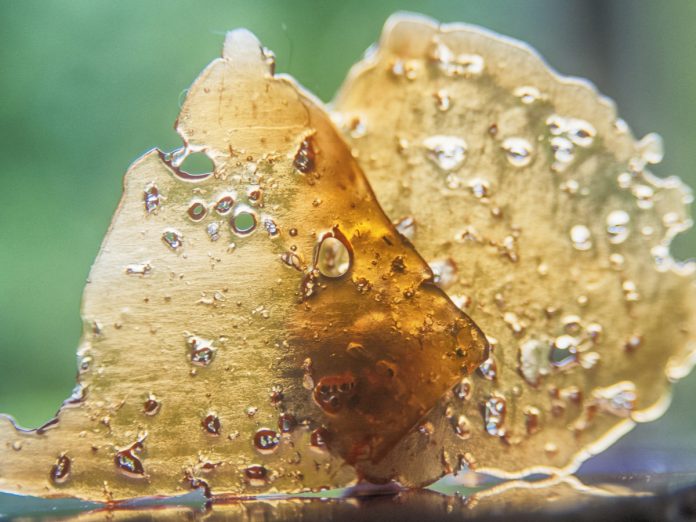OLYMPIA, Wash. – Legislators in Washington state have introduced a bill that would cap recreational cannabis concentrates at 10 percent THC.
The move effectively would outlaw a huge portion of the recreational cannabis concentrate market in the state—including many vape cartridges and dabbing products such as shatter or wax.
House Bill 2546 was created in response to a study published last year analyzing frequent high-potency cannabis use. The study, from psychology journal The Lancet, found individuals who used high-potency cannabis on a daily basis were significantly more likely to suffer episodes of psychosis than those who never consumed cannabis.
“The legislature finds that health professionals and researchers continue to find an association between the use of high potency marijuana and the occurrence of psychotic disorders,” the bill’s text reads. “A 2019 study analyzed data from patients with first-episode psychosis and found that, compared with participants who reported never having used cannabis, ‘participants who used high-potency cannabis daily had 2 four-times higher odds of psychosis in the whole sample, with a five times increase in London and a nine-times increase in Amsterdam.’”
If implemented, HB 2546 could have a severe impact on recreational cannabis sales. Analysts estimate that concentrates make up approximately 40 percent of all recreational sales. In addition to the financial hit that may be absorbed by the cannabis industry, there also are concerns customers might turn to the black market for higher-dose products if the bill becomes law.
“There may well be rationale for eliminating some portion of the riskiest products on the market if there’s evidence to support that, but doing that with 40 percent off the products would make very little sense,” Leo Beletsky, a professor of law and public health at Northwestern University told Leafly. “If 40 percent of the market is toward these products and then you ban them, you’d definitely be creating a push towards the black market.”
The dangers associated with black market sales have been highlighted effectively by the vaping crisis. If customers turn to untested and unregulated sales, they could be dramatically increasing their risk of health complications.
Beletsky worries regulators may be acting in haste when they chose a 10 percent THC cap.
“They cite this study where they used a 10 percent number for a cutoff for what they define to be high-potency,” he said. “I’m not sure that is a number that makes sense.”
A 10 percent cap could increase the need for dilution additives, such as Vitamin E—which the CDC has said is a contributing factor in the ongoing vape-related lung injury crisis—to lower the concentration of THC in products.
“We’re trying to preserve the chemistry that’s in the flower and just make a concentration of it,” said Daniel Luebke, director of marketing and brand for Heylo a Washington based extractor. “To cater to the new 10 percent THC legal demand, we would have to be making an inferior product.”
While HB 2546 only cites one study, it is clear that additional research on concentrates is necessary, even if a 10 percent cap is too restrictive.
© 2025 Incunabulum LLC. All rights reserved. mg Magazine is a registered trademark of Incunabulum LLC. The material on this site may not be reproduced, distributed, transmitted, cached or otherwise used, except with the prior written permission of Incunabulum LLC.












